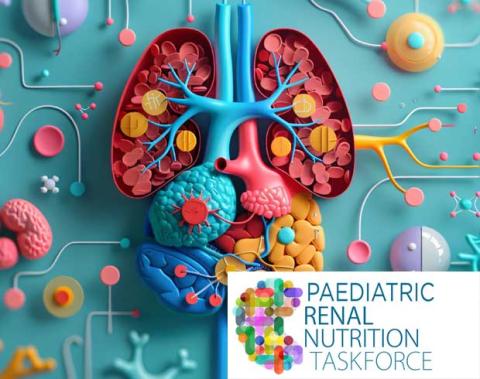Tips for Transitioning Young Children with Chronic Kidney Disease (CKD) to Solid Food (Weaning) | Practical Resource
Description
Practical information outlining tips for transitioning young children with chronic kidney disease (CKD) to solid food (weaning).
It may be a challenge to transition a child with CKD from breast milk or infant formula to a solid food diet. Some of the reasons behind this include:
- Uremia and associated taste changes1, 2
- Aversions to having food in their mouth due to a history of medical interventions with tubes/devices2
- Physiological developmental delays2
- Limited appetite3
- Fullness from peritoneal dialysis fluid3
- Fullness from meeting high calorie and fluid requirements2
- Taste alterations due to medications2
- Gastrointestinal reflux and associated pain with food consumption3
- Delayed gastric emptying and associated fullness3
- Constipation and associated fullness3
- Metabolic acidosis and concomitant decrease in appetite5
- Vomiting post food intake3
- Dietary restrictions5
Although the transition to a solid food diet may take longer in children with CKD, there are some strategies to promote improved oral diet. These include:
- Treat reflux and delayed gastric emptying medically3
- Adjust medication administration (e.g. via tube or change medications)2, 6
- Encourage solids at an appropriate age (at 6 months of age for term children, slightly later for premature children)6
- Involve speech and language therapy, occupational therapy, a feeding team or feeding psychologist if a child demonstrates
- struggles with texture or oral advancement (by age 8-10 months)6, 8
- Do not force feed8
- Promote a positive environment for feeding – make meal and snack time happy and fun8
- Model appropriate oral intake, emphasizing enjoyment of food8
- Allow all foods with an emphasis on nutrient dense foods; only limit per renal diet restrictions when more than ~2 tablespoons are consumed in a given feeding of a restricted food6
- Avoid “grazing” and offer regular meals and snacks – with at least 2 hours between food offerings8
- Offer regular meals and snacks even if the child is consuming very little or no food – regular exposure is important!8
- Gradually increase texture as tolerated6, 8
- Some children skip the “baby food” stage and go straight to finger foods8
- Encourage pacifier use and mouthing of safe toys to promote oral stimulation8
- Encourage positive touch in the mouth and face area including kisses and caresses from parents with firm but gentle touches8, 9
- Offer a variety of foods5
- Depending upon hospital policy, offering overnight tube feeding (rather than during the daytime) may enable the child to feel hungry during the day and thus encourage oral diet. Bolus feeds could be timed so that the feeds emulate meal and snack times, with encouragement to the child to consume oral diet prior to the bolus being given. This enables the child to associate eating solid foods with satiation6
- Offer high calorie nutritious foods at meals and snacks to help meet calorie needs5, 6
- Offer high calorie oral nutrition supplements as snacks to meet calorie needs and allow ad lib desired solid food intake at meals6
- Keep trying! Often the habits set up during CKD / dialysis don’t pay off until a child has had a transplant or until they are older. Often, after a transplant, children will rapidly advance their solid diet9, 10
- A subset of post-transplanted CKD patients will need a specialized feeding clinic long-term due to significant feeding challenges throughout the course of CKD – time is needed for these children to eventually accept food10
- Ruley EJ, Bock GH, Kerzner B, Abbott AW, Majd M, Chatoor I. Feeding disorders and gastroesophageal reflux in infants with chronic renal failure. Pediatr Nephrol. 1989; 3(4):424-9.
- Warady BA, Kriley M, Belden B, Hellerstein S, Alon U. Nutritional and behavioural aspects of nasogastric tube feeding in infants receiving chronic peritoneal dialysis. Adv Perit Dial. 1990; 6:265-8.
- Ravelli AM, Ledermann SE, Bisset WM, Trompeter RS, Barratt TM, Milla PJ. Foregut motor function in chronic renal failure. Arch Dis Child. 1992; 67(11):1 343-7.
- Salusky IB, Fine RN, Nelson P, Blumenkrantz MJ, Kopple JD. Nutritional status of children undergoing continuous ambulatory peritoneal dialysis. Am J Clin Nutr. 1983; Oct; 38(4):599-611.
- Paglialonga F, Edefonti A. Nutrition assessment and management in children on peritoneal dialysis. Pediatr Nephrol. 2009; 24(4):721-30.
- Nelms CL. Optimizing Enteral Nutrition for Growth in Pediatric Chronic Kidney Disease (CKD). Front Pediatr. 2018; 6:214.
- Parekh RS, Flynn JT, Smoyer WE, et al. Improved growth in young children with severe chronic renal insufficiency who use specified nutritional therapy. J Am Soc Nephrol. 2001; 12(11):2418-2426.
- Samaan S, Secker D. Oral feeding challenges in infants with chronic kidney disease. Infant Child Adolesc Nutr. 2014; 6:164–71.
- Fucile S, Gisel E, Lau C. Oral stimulation accelerates the transition from tube to oral feeding in preterm infants. J Pediatr. 2002; 141(2):230-6.
- Lerret SM, Erato G, Goday PS, Silverman AH. A clinical description of children with solid organ transplants who present with feeding disorder. Pediatr Transplant. 2019; 23(3):e13389.


